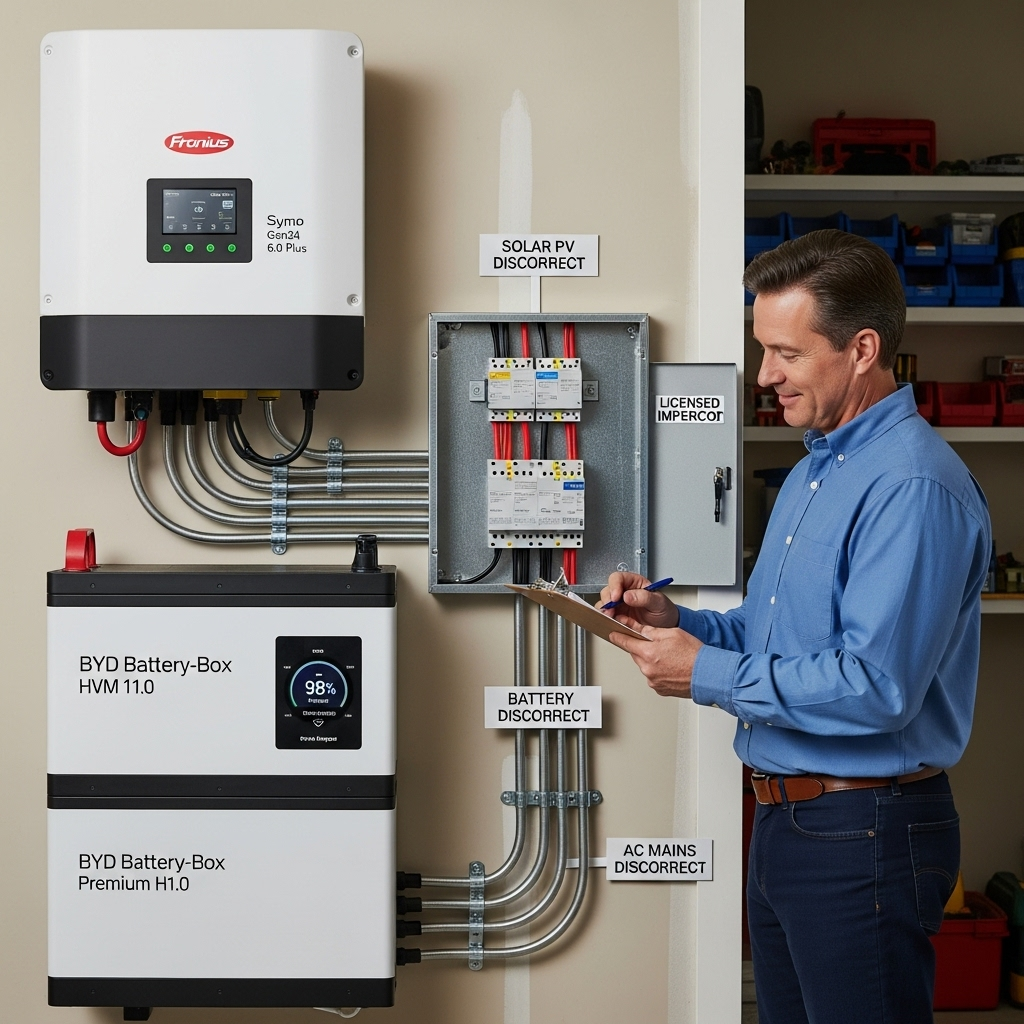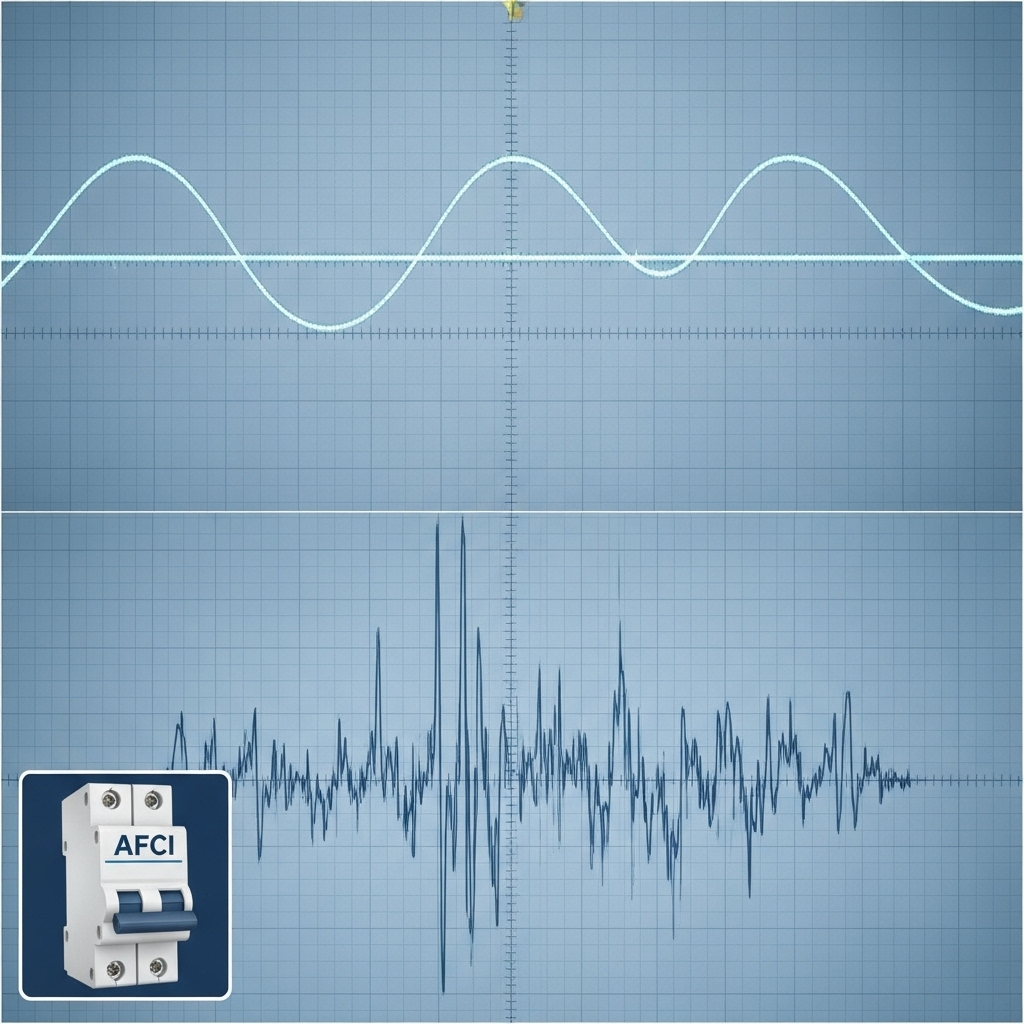A successful inspection is the final, critical step before activating your solar and energy storage system. Passing this review confirms that your installation is safe, reliable, and compliant with national standards. The National Electrical Code (NEC) provides the essential framework, specifically in Article 690 for Solar Photovoltaic (PV) Systems and Article 706 for Energy Storage Systems (ESS). This guide offers actionable steps to navigate these requirements and prepare for a smooth inspection process.
Core Principles of NEC 690 for PV System Safety
Article 690 is the foundation for safe PV system installation. It covers everything from circuit requirements to grounding. An inspector will focus on key areas to ensure the system protects both the property and any personnel servicing it.
Mastering Disconnecting Means
A disconnecting means allows for the electrical isolation of equipment. For a PV system, this is a crucial safety feature. The main PV system disconnect must be clearly labeled 'PV SYSTEM DISCONNECT' and be readily accessible. This allows service personnel or emergency responders to de-energize the system quickly. The disconnect must plainly indicate whether it is in the open (off) or closed (on) position. Inspectors will verify its location, labeling, and proper function.
Implementing Rapid Shutdown Systems (RSS)
Rapid shutdown is a vital safety requirement designed to protect firefighters from shock hazards on rooftops. NEC 690.12 mandates that PV systems on buildings must have a way to quickly reduce the voltage of conductors. Within the array boundary (defined as 1 foot from the array), conductors must be limited to 80 volts or less within 30 seconds of initiation. Conductors outside this boundary must be reduced to 30 volts or less in the same timeframe. An inspector will verify that a listed RSS is installed, the initiation device is properly labeled, and it functions according to these strict time and voltage limits.

Correct Conductor Sizing and Overcurrent Protection
PV system conductors must be sized to handle the maximum possible current, accounting for environmental factors like high temperatures. Using undersized wires is a serious fire hazard. All conductors must be properly identified and secured. Overcurrent protection devices (OCPDs), such as fuses or circuit breakers, must be rated for DC circuits and correctly sized to protect the wiring and equipment. The inspector will check wire gauges, insulation types, and the ratings of all OCPDs against the approved electrical diagram.
Navigating NEC 706 for Energy Storage System Compliance
As energy storage becomes more common, NEC Article 706 provides specific rules for these systems. It governs the installation, disconnection, and safe operation of batteries and other storage technologies, ensuring they integrate safely with the property's electrical system.
ESS Disconnecting Means and Shutdown
Similar to PV systems, every ESS requires a disconnecting means to isolate it from all other power sources and wiring. This disconnect must be readily accessible and located either within the ESS itself or within sight (and not more than 10 feet away). It must be clearly marked 'ENERGY STORAGE SYSTEM DISCONNECT'. Inspectors will confirm the presence, location, and labeling of this critical safety switch, ensuring it allows for complete isolation of the unit.
Ventilation and Thermal Management
Batteries generate heat during charging and discharging. Proper ventilation is essential to dissipate this heat and prevent thermal runaway, a dangerous condition where rising temperatures can lead to system failure or fire. The installation must adhere to the manufacturer's specifications for clearances and ventilation. An inspector will check that the ESS has adequate working space and that any required ventilation systems are installed and operational.
Location, Spacing, and Signage
NEC 706 has specific rules about where an ESS can be installed, often prohibiting installation in habitable spaces like closets or bedrooms. The system must also have adequate working clearances as specified by the manufacturer and NEC 110.26. Clear signage is mandatory to alert emergency responders to the presence of an energy storage system. This helps ensure they take appropriate precautions in an emergency.
System Integration: Where PV and ESS Meet
A combined PV and ESS installation requires careful integration of multiple systems. The connection points are areas of focus during an inspection, as they involve both AC and DC circuits from different sources.
Interconnection and Wiring Integrity
The point of connection between the PV, ESS, and the main electrical panel is governed by NEC Article 705, 'Interconnected Electric Power Production Sources.' All wiring must use appropriate methods, and conductors must be protected in raceways where required. According to a report on Grid Codes for Renewable Powered Systems, ensuring technical requirements for generators are met is a key part of grid integration. An inspector will scrutinize these connections to ensure they are secure, correctly wired, and use listed components.
Grounding and Bonding for Total System Safety
Proper grounding is non-negotiable. It provides a safe path for fault currents, protecting people and equipment from electrical shock. All metallic components that could become energized, including module frames, racking, and enclosures, must be bonded together and connected to the equipment grounding conductor. The inspector will verify the integrity of the entire grounding system, from the array to the grounding electrode.
Leveraging Performance Data for Compliance
Understanding your system's operational data can be a proactive step toward passing inspection. By monitoring key metrics, you can often spot underlying issues like faulty wiring or component mismatches that could also lead to a failed inspection. A comprehensive guide to solar storage performance can provide valuable insights into what normal operation looks like. If your system's output doesn't match expectations, it may indicate a problem that an inspector would also flag.
Final Preparations for a Smooth Inspection
Preparation is key to a first-pass approval. A final walkthrough before the inspector arrives can catch minor issues that might otherwise cause delays.
The Pre-Inspection Checklist
Before scheduling your inspection, run through a final checklist:
- Are all required labels present, legible, and permanently affixed?
- Are disconnects clearly marked and easily accessible?
- Is all wiring properly supported, protected, and terminated?
- Are working clearances around all equipment maintained?
- Is the worksite clean and free of hazards?
- Is all required documentation, including plans and spec sheets, available on-site?
Documentation and On-Site Readiness
Have all relevant documents ready for the inspector. This includes the approved plan set, manufacturer's installation manuals for all major components, and any warranty information. It is also highly beneficial to have the lead installer or another knowledgeable person present to walk the inspector through the system and answer any technical questions.
Your Path to Approval
Passing a PV and ESS inspection comes down to diligent planning and adherence to the safety standards outlined in NEC 690 and 706. These codes are not obstacles; they are blueprints for a safe, efficient, and durable energy system. By focusing on correct implementation of disconnects, rapid shutdown, wiring, and grounding, you build a system that is not only compliant but also provides lasting value and energy independence.
Frequently Asked Questions
What is the most common reason for a failed PV inspection?
Incorrect or missing labeling is a frequent cause of failure. Inspectors need to see clear, durable labels for disconnects, rapid shutdown, and system specifications as required by NEC 690 and 706. Another common issue is improper grounding and bonding of equipment.
Do I need a rapid shutdown system for my ground-mounted PV array?
Generally, rapid shutdown requirements apply to PV systems installed on or in buildings to protect emergency responders. Ground-mounted systems may have different requirements. However, you must always check with your local Authority Having Jurisdiction (AHJ), as they have the final say on code interpretation and enforcement in your area.
Can I install my own battery system and get it inspected?
While some jurisdictions allow for homeowner installations, ESS installations involve high voltages and complex code requirements under NEC 706. It is highly recommended to use a qualified and certified professional. A professional installer understands the nuances of local codes and inspection processes, greatly increasing the likelihood of a safe installation and a passed inspection.





Leave a comment
All comments are moderated before being published.
This site is protected by hCaptcha and the hCaptcha Privacy Policy and Terms of Service apply.